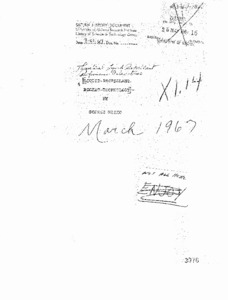
Browse Items (2 total)
Sort by:
-
Theoretical liquid propellant performance calculations
Archive copy is a photocopy.; The purpose of these writings is to compile in one volume the basic elements of thermodynamics and gas dynamics which are useful in the evaluation of thrust chamber performance. It is presumed that the reader will have had an elementary course in thermodynamics and gas dynamics. The discussion of topics useful in evaluating thrust chamber performance is, of necessity, limited to these physical effects amenable to other areas that are as yet in the research stage of development. The author would like to take this opportunity to express his gratitude to Mr. G. S. Gill for many stimulating discussions on this subject. Thanks are due to Mr. D. J. Kuyper for permission to utilize his discussion on elastic-plastic strain and its application to nozzle throat area change. Finally, the author wishes to express his gratitude to his wife, Alice, who typed the bulk of the manuscript. -
"The significance of parameters affecting the heat transfer to the liquid hydrogen in the Saturn S-IVB stage for the lunar orbit rendezvous mission."
The Saturn S-IVB stage has a requirement for orbiting around the earth for up to 4.5 hours with approximately 60 percent of its initial propellant remaining at the end of the coast (prior to restart) . Extensive analyses must be performed to insure that this requirement is met. Both the maximum and minimum heat transfer rates are important because the maximum rates affect the hydrogen boiloff losses and thus the initial propellant loading requirements. The minimum rates are important because the boil off gases are used to maintain a minimum axial thrust level by venting the gases continuously through aft facing nozzles. This provides for a settling of the propellant throughout the orbital coast and alleviates the need for periodically venting the tank under zero gravity.

